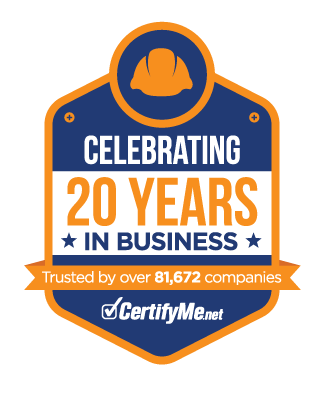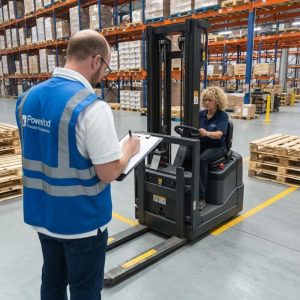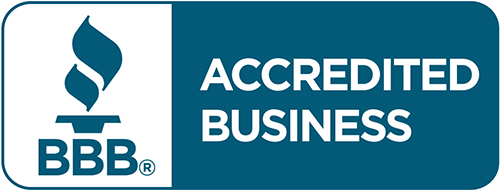OSHA Hands-On Evaluation: Step-by-Step Guide for Safe and Compliant Operator Training
Posted by: santiago jimenez on September 19, 2025
OSHA Required Hands-On Evaluation: A Simple Guide
Do your forklift or powered industrial truck (PIT) operators know how to handle the equipment safely on the job?
OSHA says it’s not enough to just take a class or pass a written test. Every operator must also show they can safely use the equipment in real work settings, which is why proper forklift certification is essential. This is called a hands-on evaluation, and it’s required by OSHA under 29 CFR 1910.178.
In this guide, we’ll break it down:
- What a hands-on evaluation is
- Who is allowed to do the evaluations
- How to do the evaluation step by step
- What to know for different types of equipment
- When to recertify your workers
- What to document and keep on file
- Myths about operator evaluations
We’ll also show how tools like CertifyMe.net’s OSHA-compliant training and ready-to-use evaluation forms can help small businesses stay compliant and safe.
What Is OSHA Hands-On Evaluation — and Why Is It Required?
An OSHA hands-on evaluation is a real-world test. It checks if a worker can safely drive or operate a powered industrial truck (PIT)—like a forklift—on the job.
It’s not just about passing a written test. Workers must show they can actually use the equipment the right way at work. This rule helps meet federal safety laws and lowers the risk of accidents.
What Does OSHA Mean by “Hands-On” or “Practical” Evaluation?
OSHA says a hands-on evaluation must happen on-site, using the actual equipment. The trainer watches the operator do things like:
- Start and stop the truck
- Steer and control it in tight areas
- Pick up, carry, and place loads
- Do safety checks before using the truck
This test proves the worker can use the equipment safely—not just in theory, but in action.
Why Is Hands-On Evaluation So Important?
Classroom lessons are useful—but not enough.
The hands-on test shows if the operator really knows how to handle the truck safely under real working conditions. It helps:
- Prevent accidents
- Spot safety problems early
- Reinforce good habits
- Keep everyone on the floor safer
These benefits extend beyond compliance by improving efficiency and reducing workplace strain.
What OSHA Rule Requires This?
The OSHA Standard 1910.178 covers powered industrial trucks. It says all operators must:
- Get classroom or online training (formal instruction)
- Practice on the equipment (practical training)
- Pass a hands-on evaluation before they operate a truck on their own
This rule applies to any job that uses forklifts or similar trucks for moving materials.
What’s the Difference Between Formal Training and a Hands-On Evaluation?
Formal training is where workers learn the rules, usually through:
- Classroom lessons
- Videos
- Written materials
Hands-on evaluation is where they show what they’ve learned by actually using the equipment at work. Both are required by OSHA. This way, workers don’t just know the rules—they can apply them safely on the job.
Who Can Do an OSHA Hands-On Evaluation?
Only a competent person can do the hands-on evaluation.
That means someone who:
- Knows how to use the equipment
- Understands OSHA rules
- Has the experience to judge if an operator is doing things safely
- Can give fair and accurate feedback
What Does OSHA Mean by “Competent Person”?
According to OSHA, a competent person is someone who:
- Can spot hazards in the workplace
- Has the authority to fix those hazards
- Has the training and experience to know what’s safe and what isn’t
This is the kind of person who should be evaluating forklift or truck operators.
Can Employers or Supervisors Do the Evaluation?
Yes. If a manager, supervisor, or safety officer meets the competent person requirements, they can perform the evaluation.
This can be helpful because:
- It makes scheduling easier
- It keeps safety a regular part of the workday
- It encourages accountability inside your team
Can Third-Party Trainers Like CertifyMe.net Evaluate Operators?
Yes. Outside trainers—like CertifyMe.net experts—can also do hands-on evaluations if they have the right training and OSHA knowledge.
Many businesses choose this option to:
- Get an unbiased evaluation
- Use ready-made, OSHA-compliant forms
- Stay up to date with changing safety standards
How to Do an OSHA Hands-On Evaluation — Step by Step
To meet OSHA rules, a hands-on evaluation must include three parts:
-
Formal training (like classes or videos)
-
Practice using the equipment
-
A real-world evaluation to prove the operator can safely use the truck at work
The evaluation must be done by someone who is trained, experienced, and knows OSHA standards.
Key Steps for an OSHA-Compliant Evaluation
Here’s a simple checklist of what to do:
- Check the operator’s information
Make sure they’ve had formal training and practice time. - Inspect the equipment
Before testing, do a pre-use safety check of the truck. - Watch the operator work
Have them perform key maneuvers like:- Starting and stopping
- Lifting and placing loads
- Turning in tight spaces
- Parking safely
- Use a checklist to score them
Fill out a standardized evaluation form while observing. - Give feedback right away
Tell the operator what they did well and what needs work. - Record the final results
If they pass, certify their competence. If not, plan retraining.
Using these steps helps make sure every operator meets the same safety standard.
What Are OSHA Evaluation Checklists and Why Do They Matter?
Use equipment-specific checklists—like those from CertifyMe.net—to track every step of the evaluation. These checklists help evaluators:
- Cover all safety checks
- Track performance during each maneuver
- Stay consistent across operators
These forms make it easier to prove OSHA compliance later during audits.
What Real-World Factors Should You Include in the Evaluation?
Make sure the evaluation reflects your actual work site. Consider:
- Floor surface (smooth, uneven, wet, etc.)
- Type of loads (heavy, stacked, unstable)
- Space and layout (narrow aisles, ramps, etc.)
- The exact truck type used at that site
This makes sure operators are tested in the same conditions they’ll work in.
How to Handle Different Equipment and Hazards
| Equipment Type | Common Hazard | What to Evaluate |
|---|---|---|
| Forklift | Tipping, unstable loads | Load balance and turning safety |
| Aerial Lift | Falls, overhead collisions | Platform control and space awareness |
| Pallet Jack | Muscle strain, poor routes | Safe posture and clear travel paths |
Each type of powered truck comes with different risks. Make sure your evaluation focuses on the main hazards for each one.
Giving Feedback and Finishing the Evaluation
After the test:
- Tell the operator what they did right
- Point out anything unsafe
- Decide if they’re approved or if they need more training
Finally, sign and date the form, and keep it on file. This record shows OSHA (and your team) that each operator is qualified.
What Are the Equipment-Specific OSHA Hands-On Evaluation Rules?
OSHA requires hands-on evaluations for every type of powered industrial truck (PIT). The tests must match the equipment being used and the tasks done on the job.
Here’s how to evaluate each type of PIT under OSHA 29 CFR 1910.178.
Forklift Evaluation (OSHA 1910.178)
When testing forklift operators, make sure they can:
- Do a pre-shift inspection of the forklift
- Lift and lower loads safely
- Place loads correctly on shelves or racks
- Steer in tight areas with control
- Drive at safe speeds
- Follow load capacity charts and safety zones
The goal is to confirm they can use the forklift safely under normal worksite conditions.
Aerial Lift Evaluation
For aerial lifts (like boom or scissor lifts), test the operator on:
- Platform stability at height
- Use of a safety harness or fall protection
- Awareness of overhead obstacles
- How to do an emergency descent
- Safe control while working above ground
Evaluators should simulate real tasks to check for proper control and emergency response.
Pallet Jack Evaluation
Pallet jacks (manual or electric) must be tested for:
- Steering and turning in small spaces
- Braking and stopping safely
- Keeping loads centered and stable
- Using proper body posture to avoid strain
- Picking safe travel paths through the workspace
This helps reduce injuries from bad posture and damage to products.
Other PITs That Need Hands-On Evaluations
Other powered trucks that need evaluations include:
- Order pickers
- Reach trucks
- Turret trucks
These machines have special controls and require more complex movements. Evaluations should be site-specific and test the operator’s ability to handle real-world tasks safely.
How to Stay OSHA Compliant with Hands-On Evaluation Records
Keeping good records is a big part of staying compliant with OSHA 1910.178. If OSHA audits your company, they will ask for proof that your operators were properly trained and evaluated.
Best Practices for Documenting Hands-On Evaluations
Here’s what you should keep on file for each operator:
- A completed evaluation form
- The date of certification
- Notes on feedback and any retraining needed
- Name and credentials of the evaluator
Store these records in one place—either in a binder or on a computer. Keep them as long as your safety policy or OSHA recommends.
How to Get Ready for an OSHA Audit
If OSHA visits your site, you’ll want to find records fast. Make sure your documents are:
- Organized by name and date
- Labeled by equipment type
- Showing who did the evaluation and their qualifications
This shows that your company takes safety seriously and follows the rules.
Why Use CertifyMe.net Evaluation Forms and Training?
CertifyMe.net makes it easier to stay compliant. Their tools include:
- Downloadable OSHA-compliant forms
- Self-paced online training
- Instant printable certification cards
These tools help you:
- Save time on paperwork
- Make sure you meet all OSHA standards
- Focus more on safe operations, not admin tasks
CertifyMe.net and OSHA Compliance
CertifyMe.net helps businesses meet the full requirements of 29 CFR 1910.178 by providing everything needed for proper training and hands-on evaluations. Their system is simple, fast, and OSHA-ready.
Frequently Asked Questions About OSHA Hands-On Evaluations
Is Hands-On Training Always Required by OSHA?
No. OSHA only requires hands-on training when the standard says so—like with powered industrial trucks (PITs), forklifts, and similar equipment under 29 CFR 1910.178. Other tools and machines may not need a hands-on test.
Does OSHA Require a Written Test Too?
Yes. For powered industrial trucks, OSHA says operators must take a written or oral test, and pass a hands-on evaluation. This makes sure they understand safety rules before using the equipment.
Who Can Be a “Competent Person” for Evaluations?
A competent person is someone who:
- Has been trained on the equipment
- Knows OSHA safety rules
- Has enough experience to judge if a worker is using the equipment safely
Can Technology Help with Evaluations?
Yes. Tools like:
- Digital checklists
- Mobile apps
- Video recordings
…can help track results, review performance, and store records. Just make sure real skills are still tested on-site.
Common Questions Employers Ask
What Happens If You Skip Hands-On Evaluations?
Skipping this step can lead to:
- More accidents or injuries
- OSHA fines and penalties
- Higher insurance costs
- Damage to equipment and product
- Lower morale and trust among workers
Reviewing forklift injury statistics shows just how common and costly these accidents can be without proper evaluations.
How Do You Make Sure Evaluations Follow OSHA Rules?
Follow these tips:
- Use standardized evaluation forms
- Make sure your evaluator is a competent person
- Do evaluations at least every 3 years, or sooner if needed
- Keep records of each operator’s test
- Update training often and use feedback to improve
What Should Be in the Evaluation Records?
Your evaluation file should include:
- Operator’s name
- Date of the test
- Type of equipment used
- Evaluator’s name and qualifications
- Notes on performance, feedback, and any retraining
This helps you stay ready for OSHA audits and track progress over time.
How Can Technology Improve the Process?
Digital tools help you:
- Record results faster and more accurately
- Review operator performance later
- Spot trends that show who needs more training
- Make audits and reporting easier
Just remember: technology is a tool—it doesn’t replace the in-person evaluation.
What’s the Best Way to Give Feedback?
Good feedback is:
- Private, not in front of other workers
- About what the operator did, not who they are
- A mix of what went well and what to improve
- Written down with any corrective actions agreed upon
This creates a safe, respectful way to keep getting better.
How Can Employers Prepare for an OSHA Inspection?
Here’s how to get ready:
- Keep all evaluation records organized and up to date
- Store forms, training logs, and feedback notes
- Do internal audits to fix gaps before OSHA finds them
- Promote a strong safety culture—it shows OSHA you’re doing your part
Welcome to CertifyMe.net
CertifyMe.net has offered online forklift certification since 1999. With Our Convenient online program. your employess can earn their certification in an hour or less.
Browse Online Certifications:
This low-cost program can be compeleted anytime, anywhere!







